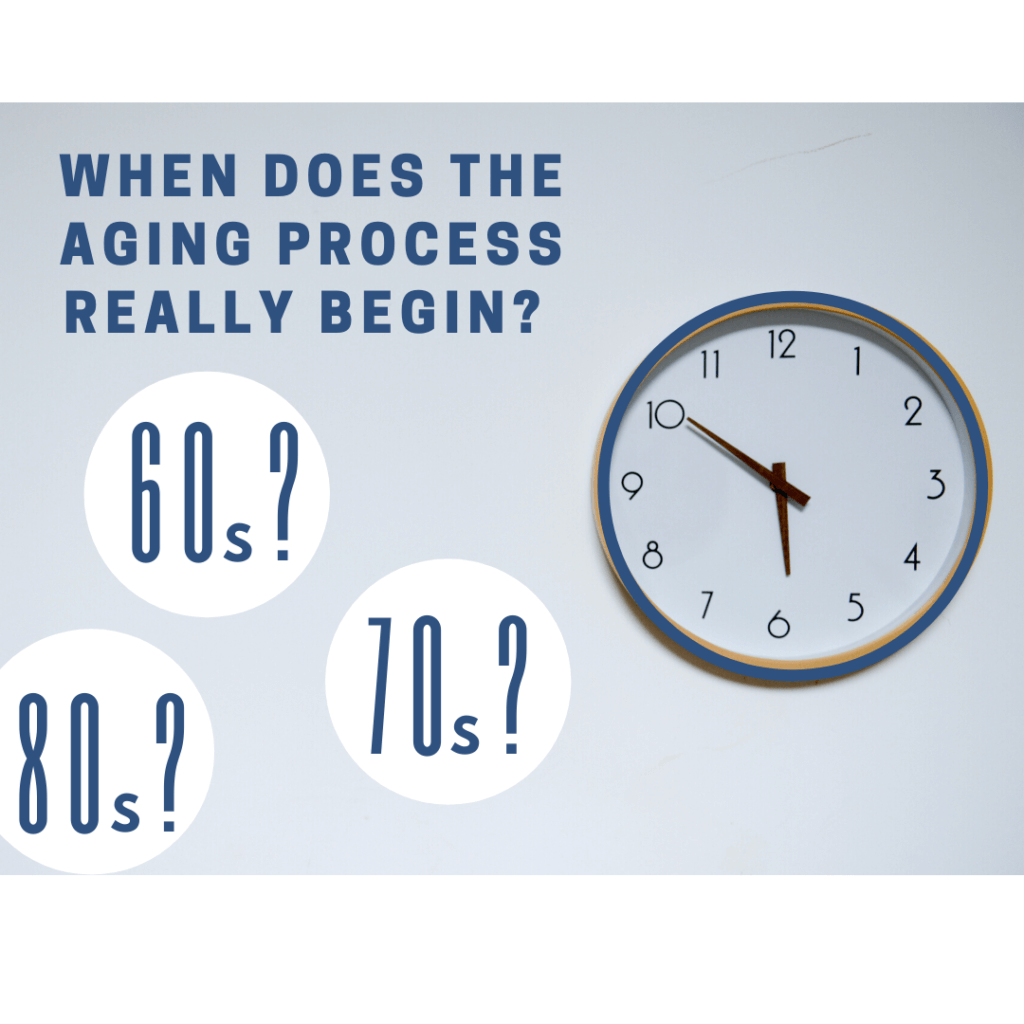September 2, 2020

Have you ever sat down with your adult children, to learn some of the truth that occurred in your household? You probably learned that a number of things happened a bit earlier than you imagined. The same holds true with a number of aging aspects as we approach the later years. What if I told you the aging process begins far earlier than many expect?
There is common notion that aging occurs in the snap of a finger. However, similar too many other processes is a culmination. In order to understand the future, we must take a look at the steps taken along the way.
The Early Beginnings of the Aging Process
Balance
One of the most discussed topics regarding the aging process is balance. However it is really only discussed if a scare occurs. Many are aware the aging process brings about challenges regarding balance. Falls, especially serious falls, typically do not happen until the latter years, right? Well, yes, but balance itself is effected far sooner than many believe.
When discussing falls, the vestibular system must be understood. The vestibular system is the sensory system located within the inner ear. It is in charge of spatial orientation, balance and coordination of movement with regard to balance.
Again, many believe if a fall has not occurred, nothing to worry about. However, a recent study conducted at Harvard Medical School found that significant vestibular changes were detected at the age of 40. Therefore, if you are reading this, and over the age of 40, your vestibular system has already started to feel the effects. Your balance may be at risk.
An easy way to begin understanding your own balance is to perform a simple single leg test. The goal is to stand on one leg for as long as possible, one should aim for 30 seconds. If you are unable to balance for as little as 10 seconds, we suggest developing or following a balance routine. If you are able to complete the 30 seconds, you’re not out of the woods. There are a number of other tests to understand the entire scope of balance.
Osteoporosis
As the aging process continues osteoporosis may come about. However, there is a precursor to osteoporosis, its less severe counterpart, osteopenia.
Osteopenia in its simplest terms is a loss of bone mass. The body reabsorbs old bone, and a human body without osteopenia will create new bone at a faster or similar rate so the net return is positive or remains the same. However, an individual living with osteopenia will absorb old bone faster than new bone is created, thus creating weaker, less calcium rich bone. Osteopenia can be thought of as the midway point between healthy bones and osteoporosis.
Osteopenia is not painful, and symptoms do not typically present themselves. However, the condition is typically found in those at or over the age of 50. Osteopenia can progress to osteoporosis…
Osteoporosis, meaning porous bone, is a condition in which bone density is reduced. The risk for fracture increases dramatically. Not only does osteoporosis increase the risk for fracture but it also plays a large role in depression and anxiety. In some cases, individuals will become fearful of falling, and the consequences of such due to their osteoporosis diagnosis. Therefore, osteoporosis does not just affect those who have fallen, it has a wide reach, 54 million Americans are said to have osteoporosis.
Alzheimer’s Disease
Alzheimer’s disease is a form of dementia, accounting for 60-80% of all dementia cases in the United States. The disease continues to be a fear for many as the disease affects more individuals each year. We are living longer, which is also increasing the risk of developing chronic conditions such as Alzheimer’s. The distinct cause of Alzheimer’s is unknown. However the greatest risk factor for developing the disease is increasing age.
Again, many associate Alzheimer’s disease with the ‘old, old’. In reality Alzheimer’s can be diagnosed prior to turning 65 years of age. The early signs and symptoms can include:
- a decline in thinking, such as trouble finding the right word
- trouble with memory
- impaired reasoning or judgement
- emotional unpredictability
- diminishing social skills
A diagnosis is not the ‘end all, be all’. There are many individuals who live fulfilling, productive lives in the early stages of Alzheimer’s disease. They do so by taking control of their lifestyle, and utilizing many programs that have been shown to help, such as the Bredesen Protocol.
The Key towards Successful Aging
If you’re reading this are you, over 40? In your 50s? Over 60? Approaching your 70s, 80s, 90s?
Do you have a loved one that is well within the age groups above?
A crucial aspect of successful aging is simply the approach taken. One can either be effected by (insert condition) or living with (insert condition). What’s the difference? Those who choose to live with a particular condition have made the conscious decision to take it head on, control what they can control, and be thankful for the life they were given. If a diagnosis occurred, which would you choose?
Time to take control of your health and the aging process! A proactive approach is key. Taking the initiative on prevention and or management on all chronic conditions will help to promote successful aging and allow for a happier, healthier life.